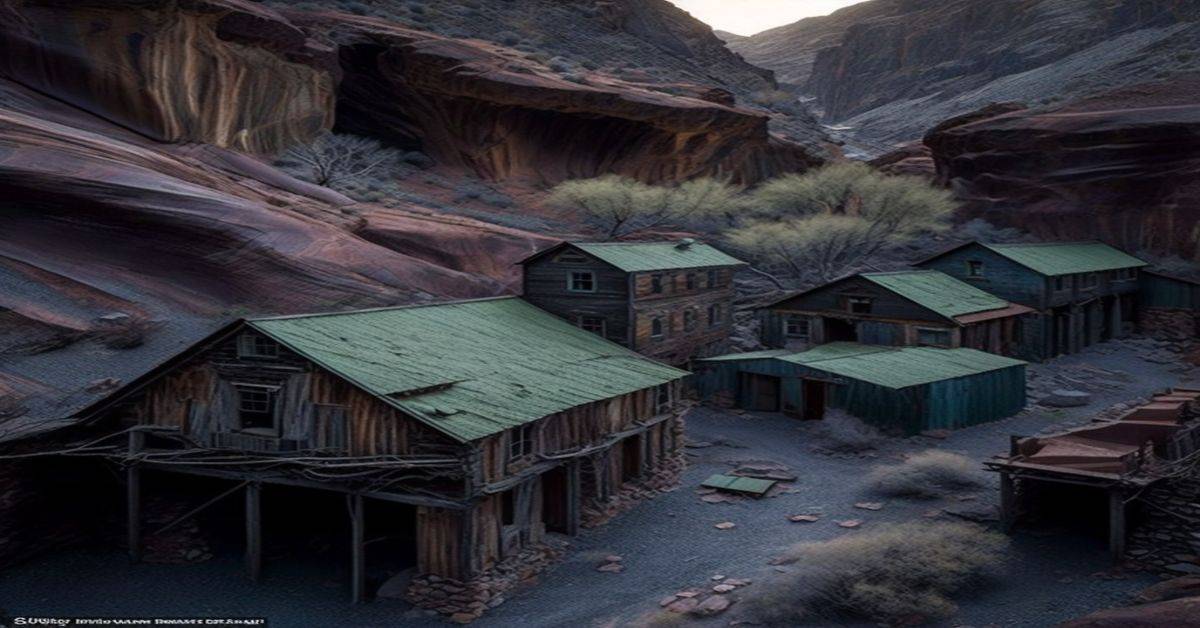While exploring an abandoned town may seem unappealing to some, the town of Flamingo, Florida, offers a unique and haunting experience that cannot be found elsewhere. The town’s history is one of human greed and the devastating consequences it can have on the natural world.
While some may be deterred by the town’s infestation of fleas and mosquitoes, the Coastal Prairie Trail offers a glimpse into the daily life of the town’s former residents and the challenges they faced.
Located in the heart of Everglades National Park, Flamingo was once a thriving community of around 50 families who made their living from fishing, farming, and making charcoal. However, the town was ultimately brought to its knees by the greed of plume hunters who decimated the bird populations in the area for their feathers.
Today, the remnants of the old coquina rock buildings serve as a reminder of the devastating impact that human actions can have on the natural world. Despite the town’s abandonment and the harsh conditions that come with exploring it, the opportunity to witness the consequences of human greed firsthand is a powerful and unforgettable experience.
Key Takeaways
- Flamingo is a ghost town located in Everglades National Park, settled in 1892 and named in 1893.
- The town’s economy was based on fishing, farming, charcoal making, and plume hunting, which led to its downfall.
- Flamingo had a brief resurgence during prohibition as a haven for moonshiners.
- Today, the town can be reached by hiking the Coastal Prairie Trail, approximately 4 1/2 miles from the starting point.
Location and History
Flamingo, which was settled in 1892 and received its name in 1893 when a post office was established, is a ghost town in Everglades National Park primarily based on fishing, farming, charcoal making, and plume hunting.
The town experienced a brief period of prosperity in the early 1900s, with around 50 families and a Monroe County school in operation. However, the town’s economy ultimately collapsed due to the rampant plume hunting that was taking place in the area.
This illegal practice, which involved killing birds for their feathers, led to the death of Audubon warden Guy Bradley in 1905, causing public outrage and ultimately leading to the passage of federal legislation outlawing plume hunting.
Following the passage of this legislation, Flamingo’s economy continued to decline, with the post office closing in 1909 and only three houses remaining occupied by 1910. Despite a brief resurgence during prohibition as a haven for moonshiners, the town ultimately became abandoned.
Today, visitors to Flamingo can explore the remnants of the town’s coquina rock building foundation and 1928 Geodetic Marker and hike the Coastal Prairie Trail to reach the townsite.
The rise and fall of Flamingo’s economy and the impact of federal legislation on plume hunting serve as a reminder of the delicate balance between human activity and conservation efforts in protected areas like Everglades National Park.
Description and Trail Info
The trail leading to the old town of Flamingo may prove difficult to navigate in places, particularly during summer when the path may be partially submerged and wildlife encounters are possible. Visitors should be prepared to encounter a variety of wildlife, including alligators, snakes, and various species of birds. The trail may also be overgrown in some areas, making it important to wear protective clothing and insect repellent to avoid bites from the many mosquitos and other biting insects that inhabit the area.
Despite these hiking challenges, the journey to Flamingo is well worth the effort. Along the way, hikers may catch glimpses of native flora and fauna, including wildflowers, mangroves, and cypress trees.
The old town of Flamingo itself is a fascinating glimpse into a bygone era, with its coquina rock building foundations and 1928 Geodetic Marker. Visitors will also understand the harsh living conditions that the town’s residents endured, including daily battles with fleas and mosquitos and thickly sooted cabins due to the use of smudge pots.
Miscellaneous Facts
Wildlife enthusiasts may be interested to know that the town of Flamingo was named after the large flocks of flamingos that once roamed the nearby coasts. Unfortunately, the town’s history also includes the devastating impact of plume hunting, which led to the town’s decline and the extinction of many bird species.
The plume hunting industry was responsible for the killing of millions of birds, including egrets and herons, for their feathers, which were used to decorate women’s hats. This practice was rampant in the late 1800s and early 1900s, and it was not until the murder of Audubon warden Guy Bradley near Flamingo in 1905 that public outrage led to federal legislation outlawing plume hunting.
Naturalist Leverett White Brownell visited Flamingo in 1893 and described the village of 38 shacks on stilts as infested with fleas and mosquitos. Daily life in Flamingo was rough, and cabins were thickly sooted from smudge pots.
Despite the harsh living conditions, the town had a thriving economy based on fishing, farming, charcoal making, and plume hunting. However, the town’s downfall was ultimately due to the unsustainable practices of the plume hunting industry, which caused irreparable damage to the local ecosystem and led to the abandonment of Flamingo.
Today, the town’s ruins are a poignant reminder of the devastating impact of human greed on the natural world.
Frequently Asked Questions
Are there any guided tours available to explore Flamingo ghost town?
Guided tour options to explore Flamingo ghost town are available through Everglades National Park. Pricing details vary depending on the tour, with options ranging from boat tours to hiking tours.
What were the major challenges faced by the inhabitants of Flamingo during their daily life?
The inhabitants of Flamingo faced daily struggles with fleas, mosquitos, and soot from smudge pots. Survival tactics included fishing, farming, charcoal making, and plume hunting until it was outlawed. Cabins were thickly sooted and life was tough.
Is it safe to hike the Coastal Prairie Trail alone to reach Flamingo?
Solo hikers should exercise caution when hiking the Coastal Prairie Trail to reach Flamingo due to potential wildlife encounters. It is recommended to hike during daylight hours and carry bear spray. Check trail conditions and weather forecasts before embarking.
Are there any artifacts or remnants of the town’s plume hunting history still present in Flamingo?
Plume-hunting artifacts from Flamingo’s past can still be found in the townsite, which was once a hub for the trade. The activity had an adverse environmental impact and was eventually outlawed after the murder of an Audubon warden.
What is the best time of year to visit Flamingo for the most comfortable hiking conditions?
The best time to visit Flamingo for comfortable hiking conditions is during winter months, from December to February. Essential items for hiking include sturdy hiking shoes, insect repellent, sunscreen, and plenty of water. Consider bringing lightweight and breathable hiking gear for the humid and hot weather.


